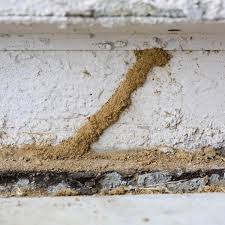Unknown Facts About Termite Control Borax
Many wildlife rehabilitation organizations encourage natural form of rodent control through exclusion and predator assistance and preventing secondary poisoning altogether.39 The United States Environmental Protection Agency notes in its Proposed Risk Mitigation Decision for Nine Rodenticides that"without habitat modification to produce areas less attractive to commensal rodents, even eradication will not prevent new populations from recolonizing the habitat. "40 The United States Environmental Protection Agency has prescribed guidelines for natural rodent control41 and to get safe trapping in residential areas with subsequent release to the wild.42 People occasionally attempt to restrict rodent damage using repellents.
Campylacantha root emits chemical compounds that repel animals including rats.4445.

Getting My Termite Control Borax To Work
In the home, foodstuffs found to be infested are often discarded, and storing such products in sealed containers should prevent the problem from reoccurring. The eggs of the insects are likely to go unnoticed, with the larvae being the harmful life stage, and the adult the most noticeable stage.47 Since pesticides are not safe to use near food, alternative treatments like freezing for four days at 0Â F (18Â C) or baking for half an hour in 130Â F (54Â C) should kill any insects present.48.
The larvae of clothes moths (mainly Tineola bisselliella and Tinea pellionella) feed on materials and rugs, particularly those that are stored or soiled. The adult females lay batches of eggs on natural fibres, including wool, silk and fur, in addition to cotton and linen in blends. The developing larvae spin protective webbing and chew into the cloth, creating holes and specks of excrement.
Carpet beetles are members of the family Dermestidae, and while the adult beetles feed on nectar and pollen, the critters are damaging pests in houses, warehouses and museums. They feed on animal products including wool, silk, leather, fur, the bristles of hair brushes, pet hair, feathers and museum specimens. They tend to infest hidden locations and may feed on larger regions of fabrics than do clothes moths, leaving behind specks of excrement and brown, hollow, bristly-looking throw skins.50 Management of infestations is difficult and is based on exclusion and sanitation where possible, resorting to pesticides you could try these out when necessary.
Some Known Facts About Termite Control Bunning's.
In warehouses and museums, sticky traps baited with suitable pheromones can be used to identify issues, and heating, freezing, spraying on the outside with insecticide and fumigation will kill the insects when appropriately applied. Susceptible items can be protected from assault by keeping them in clean airtight containers.50.
Books are occasionally attacked by cockroaches, silverfish,51 novel mites, booklice,52 and various beetles that feed on the covers, paper, bindings and adhesive. They leave behind physical harm in the shape of tiny holes as well as staining in their faeces.51 Book pests include the larder beetle, and the larvae of the black carpet beetle and the drugstore beetle which assault leather-bound books, while the common clothes moth and the brown house moth attack cloth bindings.
Evidence of attack could possibly be found in the kind of tiny piles of book-dust and specks of frass. Damage might be concentrated in the spine, the projecting edges of pages and the cover. Prevention of assault relies on keeping novels in cool, clean, dry positions with low temperatures, and occasional inspections need to be made.
House timber split open to reveal larvae of the house longhorn beetle, Hylotrupes bajulus, in their burrows, which can be partly filled with frass
The Buzz on Termite Control Blog
Numerous beetles in the Bostrichoidea superfamily assault the dry, seasoned wood utilized as structural lumber in homes and to make furniture. In most cases, it is the larvae that do the harm; those are invisible from the exterior of the wood, but are chewing away at the wood in the interior of the merchandise.
The damage has already been done by the time the adult beetles bore their way out, leaving neat round holes behind them. get more The first that a householder knows about the beetle damage is often when a seat leg breaks or a piece of structural timber caves in. Prevention is via chemical treatment of the wood prior to its use in construction or in furniture manufacture.54.
